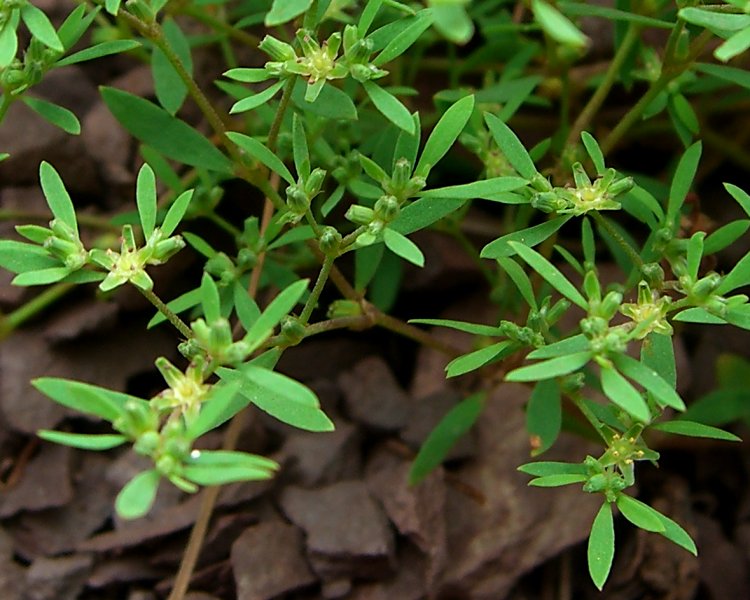
Weeds. Can’t live with them. Can’t seem to ever get rid of them! The good news is we can use weeds to our advantage! If you want a healthier looking lawn, the first step is recognizing what weeds you have and how to deal with them.
Weeds can tell you a lot about the condition of your lawn because…
“Weeds are the result of bad turf area, not the cause of bad turf!”
For example, if your turf is too thin it’s like holding up a sign that says, “Vacancy for Weeds!” Density of turf is the number one indicator of turf quality. If your lawn is looking a little sparse and weedy it is time to kill those weeds and get some grass growing!
Below is a list of weeds you may have in your lawn and what they may indicate:
If you have annual bluegrass or moss in your lawn it might suggest your turf is getting too much water. After, or during, watering do you see standing puddles? Another way to find out if you are over-watering is to take a trowel and insert it into the ground next to your weeds. If the trowel goes in smoothly or the ground is mushy, that is a sign you need to reduce the frequency of your watering.
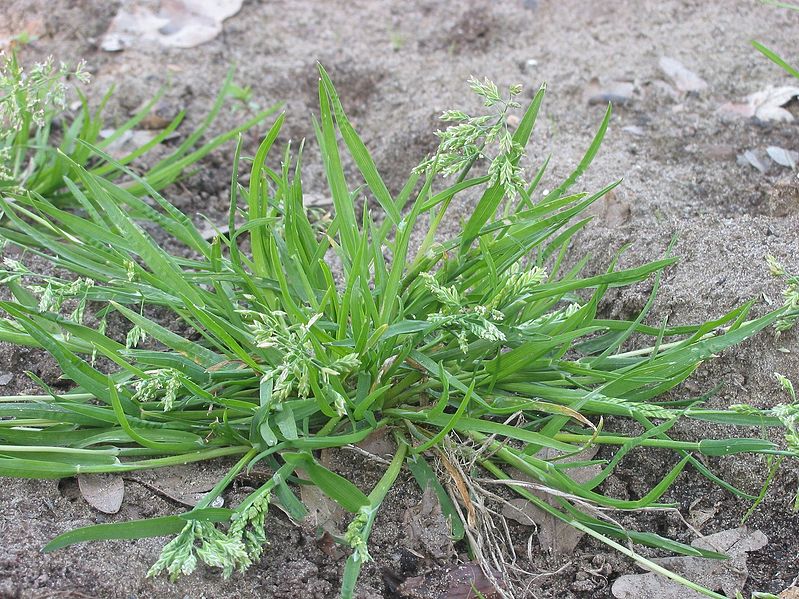 photo credit: Rasbak
photo credit: Rasbak
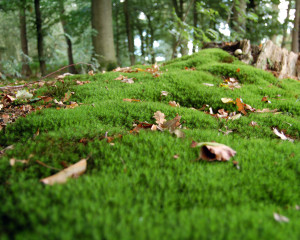 “Mos” by Dick Mudde
“Mos” by Dick Mudde
Black medic and prostrate spurge might suggest your lawn is too dry. Go out and walk around your yard. Hard walking surface and cracks are indicators of dry areas.
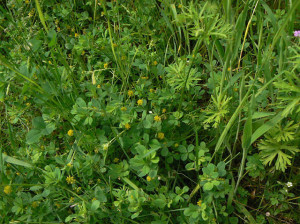 photo credit: Alan Murray-Rust
photo credit: Alan Murray-Rust
Clover might indicate low fertility. If you haven’t fertilized your lawn in awhile it might be time.
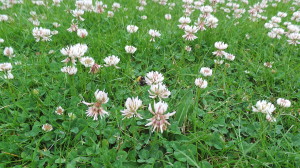 photo credit: GR8DAN
photo credit: GR8DAN
Knotweed and plantain indicate compacted soils. There is no doubt theses weeds love compaction. Just look at where they grow! Time to aerate!
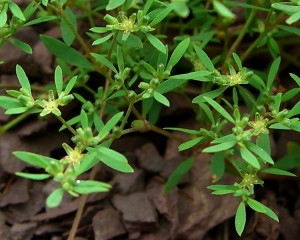 photo credit: Jason Hollinger
photo credit: Jason Hollinger
While these common types of turf weeds can indicate a problem with your turf, it doesn’t necessarily mean you have a problem with your turf. Call us anytime if you have questions or concerns regarding the health of your lawn! We’d be happy to help!
Thanks for reading!
Christina
References:
Rasbak http://commons.wikimedia.org/wiki/Poa_annua
“Mos” by Dick Mudde – Own work. Licensed under Public Domain via Wikimedia Commons – http://commons.wikimedia.org/wiki/File:Mos.jpg#/media/File:Mos.jpg
“Unidentified yellow trefoil – geograph.org.uk – 1334246” by Alan Murray-Rust. Licensed under CC BY-SA 2.0 via Wikimedia Commons – http://commons.wikimedia.org/wiki/File:Unidentified_yellow_trefoil_-_geograph.org.uk_-_1334246.jpg#/media/File:Unidentified_yellow_trefoil_-_geograph.org.uk_-_1334246.jpg
“Bee on trifolium aka clover” by GR8DAN – Own work. Licensed under CC BY-SA 3.0 via Wikimedia Commons – http://commons.wikimedia.org/wiki/File:Bee_on_trifolium_aka_clover.jpg#/media/File:Bee_on_trifolium_aka_clover.jpg
Jason Hollinger http://commons.wikimedia.org/wiki/File:Yard_Knotweed_(1017636222).jpg
